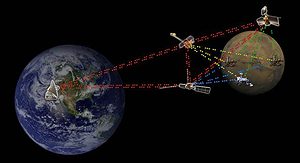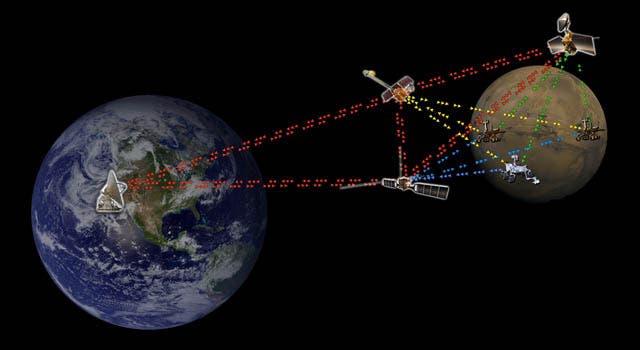
Mike Massimino hit the news in May as the first to “Tweet” in space. He began “tweeting” under the name “Astro Mike” while training for the STS-125 mission to repair the Hubble Space Telescope. Soon nearly 250,000 people were following his Twitter feed.
The reality is that Massimino probably wasn’t really “tweeting” at all, at least directly. Astronauts do not have internet access on board the shuttle. In fact, they’re typically limited to one or two opportunities each day to send an email. Believe it or not, Massimino may have been either sending his “tweets” via email, or by voice communication to NASA staff, who would then manually input them into Twitter.
However, NASA is currently planning to adopt technology that will help to change all that. Astronauts will be able to access social networking, Google, and the other resources that we groundhogs take for granted.
The Disruption Tolerant Networking (DTN) system, or “Space Internet,” has the potential to literally link worlds. The web uses Transmission Control Protocol/Internet Protocol (TCP/IP), which requires computers to be constantly connected. Guess what? It turns out that’s really difficult to achieve in space.
There are a lot of factors that hinder constant data transmission. The distances involved present something of a formidable barrier, as do occasional solar storms and interference from satellites and other bodies.
DTN deals with these challenges by making sure that each node in the network (which could include the ISS, EPOXI, Mars landers, orbiters, and ground installations) stores everything it receives until it’s got the right conditions to pass the info along to the rest of the network.
Implementing the DTN system isn’t really about making sure astronauts have access to the latest images from lolcats. Nor, with mission schedules being what they are, do astronauts have enough spare time to make StumbleUpon necessary.
What is needed, however, is an automated communications technology that can help to simplify space command and control functions, such as power and life support. This is crucial for future, larger scale space development.
NASA, other agencies, and commercial interests have ambitious programs set to roll out over the next decade. A true multimode network will be needed for much of this to come to fruition.
Testing of the DTN is already well underway. NASA has used the system to send images to and from the EPOXI spacecraft, some 32 million kilometers from Earth, and the protocols were installed on the ISS in May.









